
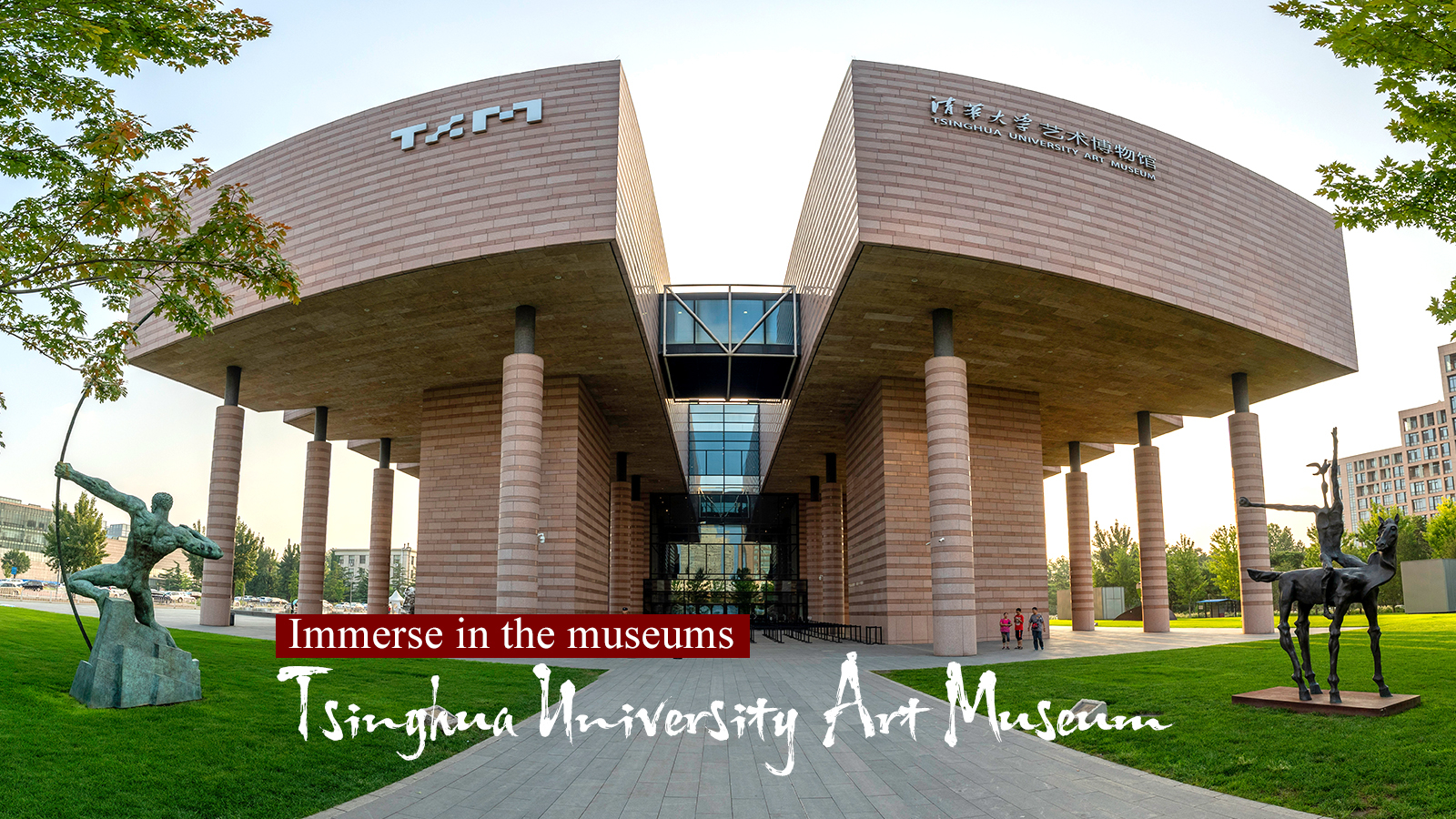
Tsinghua University Art Museum. /Photo by CGTN's Qu Bo
Located at the eastern gate of Tsinghua University, Tsinghua University Art Museum is a four-floor building with a collection of over 13,000 pieces, ranging from paintings, calligraphy, embroidery and porcelain to furniture and bronze ware. But this summer, visitors are lucky to see a couple of special exhibitions.
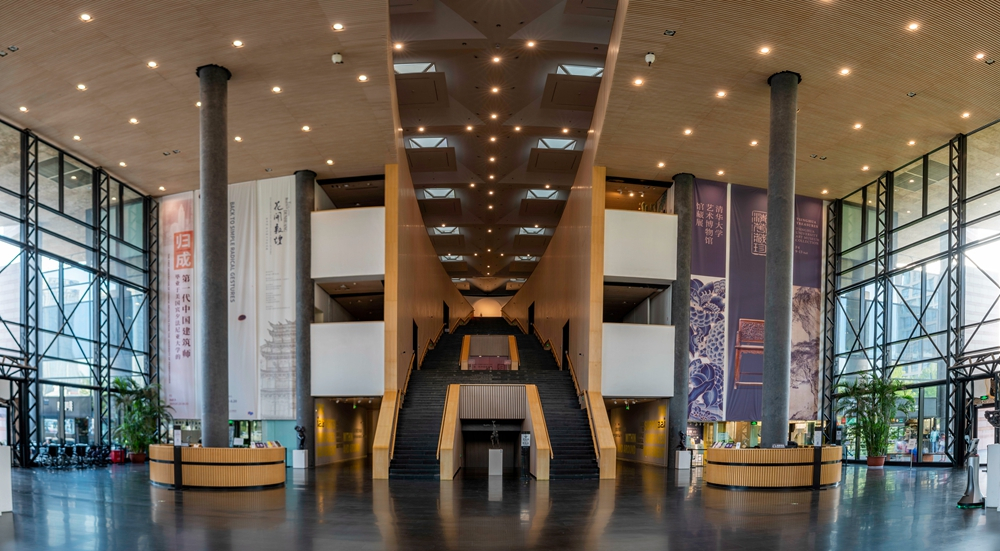
Tsinghua University Art Museum. /Photo by CGTN's Qu Bo
As we step into the third floor, the curator of the "Everlasting Beauty of Dunhuang" exhibition, Tina Huang, recounts the stories of the Mogao Grottoes murals in Dunhuang. This exhibition features Dunhuang artwork by a father-daughter pair, Chang Shuhong and Chang Shana.
Rescuing Dunhuang artwork
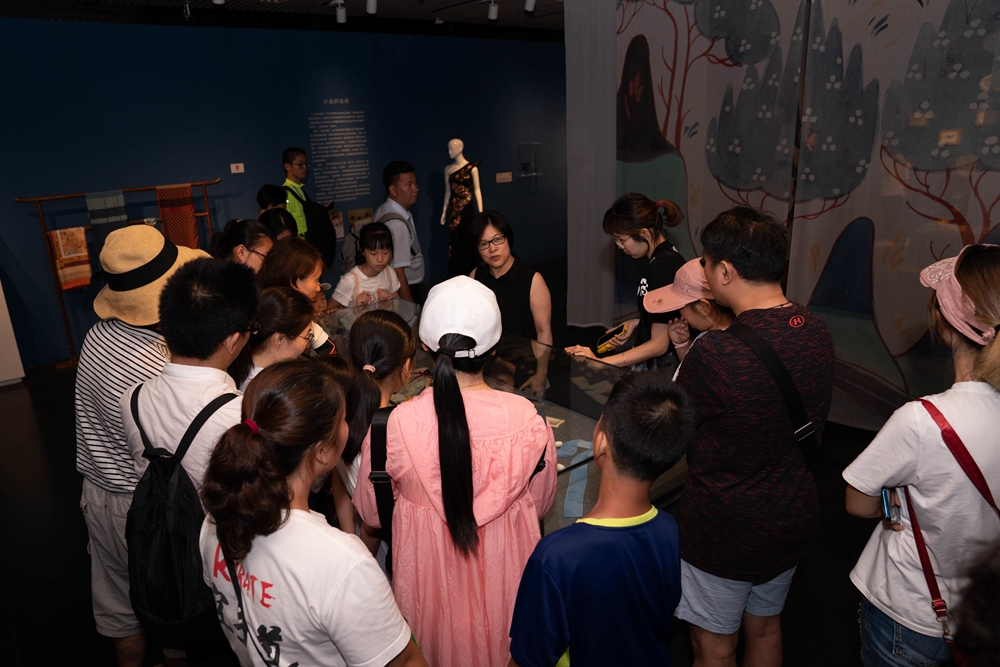
Curator Tina Huang recounts the stories of the murals from the Mogao Grottoes in the "Everlasting Beauty of Dunhuang" exhibition hall. /Photo by CGTN's Qu Bo
Dunhuang, located in northwest China's Gansu Province, is home to the world heritage site, Mogao Grottoes, with an area of over 450,000 square meters of murals, the largest of its kind in the world with a history of thousands of years.
When the Mogao Caves were first discovered at the beginning of the 20th century, the designs had already started to disappear. Years of oxidation and a surge of tourists lead to more heat, humidity, and carbon dioxide into the grottoes, causing further damage to the murals, some of which fell off, the painted sculptures damaged, and the rock mass collapsed.
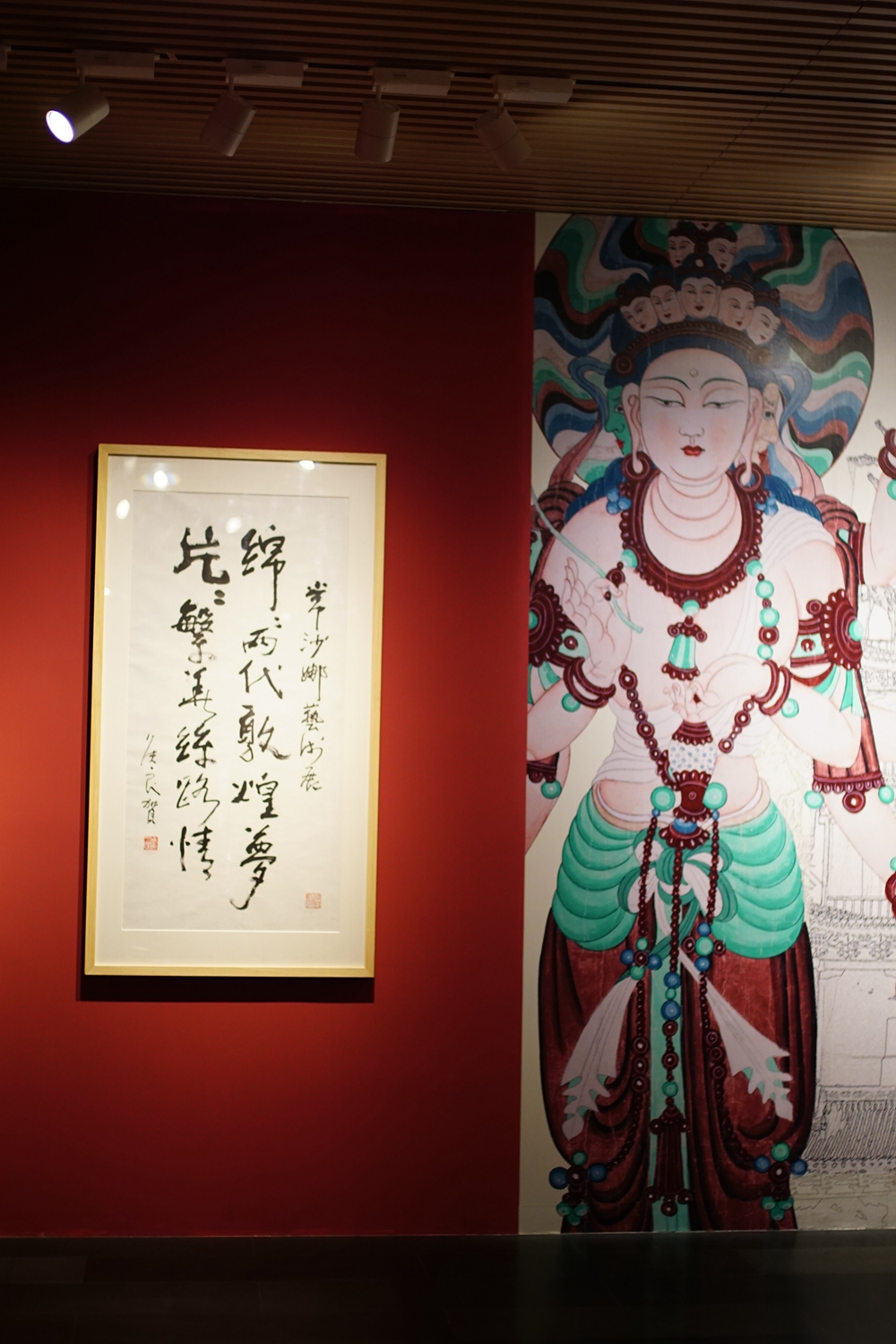
"Everlasting Beauty of Dunhuang" exhibition at Tsinghua University Art Museum. /CGTN Photo
"If no one had ever recorded the Dunhuang murals, with the natural beauty, when this generation grew up, they might never know the original appearance of the murals," Huang told CGTN.
She compared a copy from 73 years ago which was made by then 15-year-old Chang Shana and the real-time mural in the cave today, noting that the color has faded so much that the patterns have become blurred.
"Thanks to Mrs. Chang, who has kept this art piece from 1,500 years ago frozen," Huang said.

Copy on Mogao Grottoes by Chang Shana. /Photo from the National Dunhuang Cultural Research Institute
Chang Shuhong and Chang Shana are both well-known Dunhuang scholars in China. Dubbed as the guardian of Dunhuang, Chang Shuhong has spent his entire life in Dunhuang and made remarkable contributions to the study of the Mogao Grottoes. Over the last few decades, he has organized the restoration of murals, collected and distributed scattered cultural relics and recreated a large number of murals.

Copy on Mogao Grottoes by Chang Shuhong. /Photo from the National Dunhuang Cultural Research Institute
Shana Chang was deeply influenced by her father. She has been copying murals with her father since she was 12 and has devoted herself to the promotion of art education of Dunhuang artwork.
Make Dunhuang art accessible
Tina Huang said that at first, Chang was reluctant to hold an exhibition since she was so devoted to her research. But she changed her mind after she conquered cancer. The recovery after the struggle against the disease made her realize the preciousness of time and the importance of promoting Dunhuang culture.
Shana spent her early age in Dunhuang until she was 17 years old with her father and today, she carries on the mission of preserving Dunhuang art throughout her life, thus the “Everlasting Beauty of Dunhuang” exhibition.“The simplest intention of this exhibition is to show the respect and love from a daughter to her father,” Tina Huang was quoted as saying.
Although the murals were created for Buddhism, they also recorded the lifestyle and civil activities of ancient times. As Tina explained, the murals in the caves also showed the lifestyle and appearance of the people at that time. Ordinary people cannot understand Dunhuang artwork from the archaeological point of view, even if standing in front of the Mogao Grottoes. This exhibition is a way for high-end artwork to be accessible to the public.
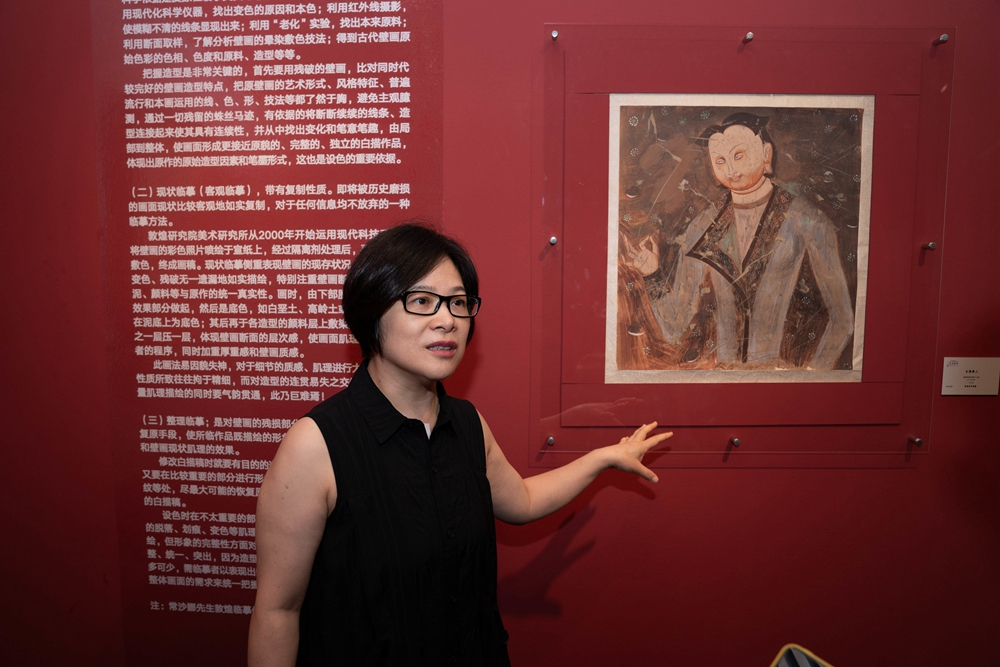
Curator Tina Huang illustrates copy works at the exhibition. /Photo by CGTN's Qu Bo
The Chinese aesthetics inheritance
The last part of this exhibition is about the application of Dunhuang art in real life.
After studying abroad and returning home, Chang Shana entered the field of craft aesthetics and completed the key design of the Great Hall of the People, based on Dunhuang patterns. She extracted the exquisite Dunhuang patterns from the murals and interpreted the essence of classical art into something in our daily life.
“Mrs. Chang said that the patterns of Dunhuang murals are too rich to be used in our real-life design,” said Tina Huang. “She is the creator of cultural and creative industries in China.”
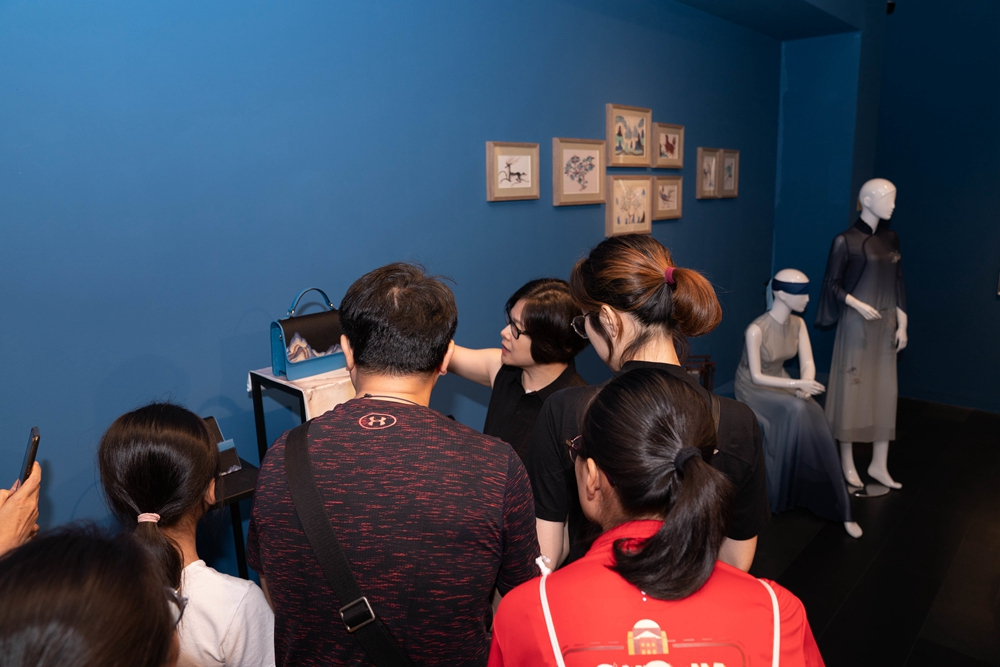
Tina Huang shows examples of the application of Dunhuang art in real life. /Photo by CGTN's Qu Bo
Travel tips:
Location: Tsinghua University Campus, 30 Shuangqing Lu, Haidian District, Beijing
Time: 16 July-15 September, 2019
Opening hours: 9:00-17:00 (last entry at 16:30)
Closed on Monday
Ordinary ticket: 20 yuan/person
Special Exhibition Ticket: 60 yuan/person

Copyright © 2018 CGTN. Beijing ICP prepared NO.16065310-3
Copyright © 2018 CGTN. Beijing ICP prepared NO.16065310-3